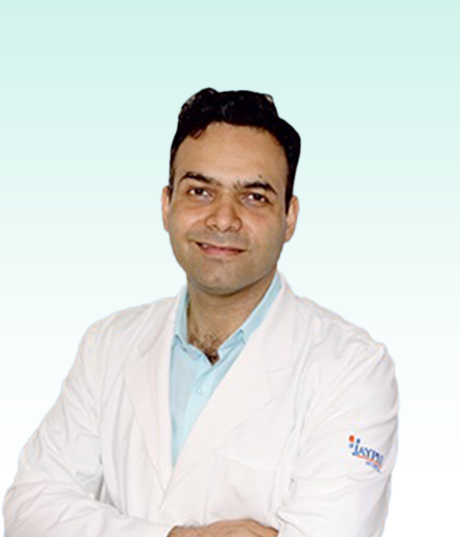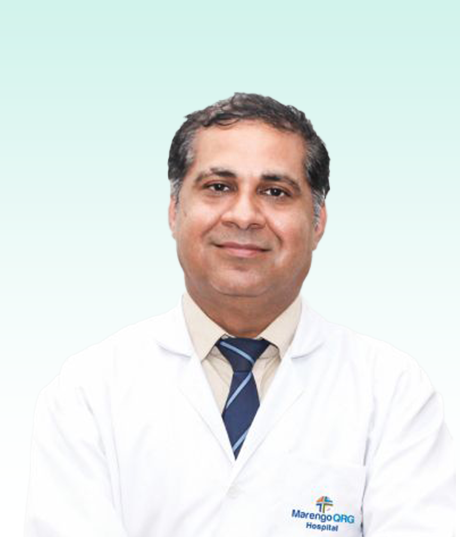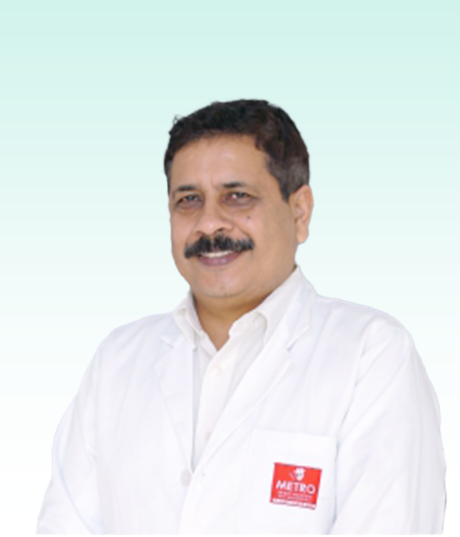Skull Base Surgery
The skull is composed of bones and cartilage that form the face and the cranium, which surrounds the brain. You can feel the bones of the cranium on top of the skull. The 5 bones that form the bottom, or base, of the cranium also form the eye socket, roof of the nasal cavity, some of the sinuses, and the bones that surround the inner ear. The skull base is a crowded and complicated area with different openings that the spinal cord, many blood vessels, and nerves all pass through.

Who Needs Skull Base Surgery
Skull base surgery may be recommended for individuals with various conditions affecting the skull base, including:
- Skull base tumors: Benign or malignant tumors that develop in or around the skull base, such as meningiomas, pituitary tumors, or chordomas.
- Skull base infections: Severe infections affecting the bones or tissues of the skull base, such as osteomyelitis or abscesses.
- Skull base trauma: Severe injuries or fractures involving the skull base, often resulting from accidents or trauma.
- Skull base abnormalities: Congenital or acquired abnormalities of the skull base, such as encephalocele or Chiari malformation.
When to See a Specialist
If you experience symptoms or receive a diagnosis indicating a condition affecting the skull base, it is recommended to see a specialist, such as a neurosurgeon or otolaryngologist. They can evaluate your specific case, perform diagnostic tests if needed, and determine if skull base surgery is necessary.
Procedure
The exact procedure for skull base surgery will depend on the specific condition being treated. However, the general steps involved in skull base surgery may include:
- Preoperative evaluation: Comprehensive assessment of the patient’s medical history, physical examination, and diagnostic imaging to plan the surgical approach.
- Anesthesia: Administration of anesthesia to ensure the patient remains comfortable and pain-free throughout the surgery.
- Access and exposure: The surgeon creates a surgical incision or uses minimally invasive techniques to access the skull base area and expose the affected structures.
- Tumor or lesion removal: The surgeon carefully removes the tumor, lesion, or abnormality while preserving nearby healthy tissue and critical structures.
- Reconstruction: If necessary, the surgeon may perform reconstruction or repair procedures to restore the normal anatomy of the skull base.
- Closure: The incision is closed using sutures or staples, and dressings are applied to promote healing.
Road to Recovery
The recovery process after skull base surgery can vary depending on the complexity of the procedure and individual factors. Some common aspects of the recovery period may include:
- Hospital stay: The length of hospitalization can range from a few days to a week, depending on the extent of the surgery and the patient’s condition.
- Pain management: Medications will be prescribed to manage postoperative pain and discomfort.
- Monitoring and follow-up: Regular follow-up appointments will be scheduled to monitor the healing process, assess any complications, and adjust the treatment plan if needed.
- Rehabilitation: In some cases, rehabilitation may be recommended to help restore function and aid in the recovery process.
Risk Management of Skull Base Surgery
Skull base surgery is a complex procedure that carries certain risks and potential complications. The specific risks will depend on the type of surgery performed and the patient’s individual factors. However, some general risks associated with skull base surgery include:
- Bleeding
- Infection
- Damage to nearby structures
- Cerebrospinal fluid leakage
- Changes in sensory or motor function
- Your healthcare team will take appropriate measures to minimize these risks and closely monitor your condition during and after the surgery.
Benefits of Skull Base Surgery
Skull base surgery offers several potential benefits for individuals with conditions affecting the skull base, including:
- Tumor removal: Skull base surgery allows for the complete or partial removal of tumors or lesions in the skull base, helping to relieve pressure on surrounding structures and potentially improving symptoms.
- Improved quality of life: By addressing conditions affecting the skull base, such as tumors or abnormalities, skull base surgery aims to improve a person’s quality of life by reducing symptoms, preserving neurological function, and restoring normal anatomy.
- Preservation of critical structures: Skull base surgery is designed to carefully preserve important structures like blood vessels, nerves, and the base of the brain, while still effectively treating the underlying condition.
- Minimally invasive techniques: Advances in surgical techniques, such as endoscopic or minimally invasive approaches, can minimize trauma to surrounding tissues, result in smaller incisions, and potentially lead to faster recovery times and reduced postoperative pain.
- Customized treatment: Each skull base surgery is tailored to the individual’s specific condition and needs, allowing for personalized treatment and optimized outcomes.
Frequently Asked Questions
Is skull base surgery a risky procedure?
Skull base surgery is a complex procedure that carries certain risks and potential complications. However, advancements in surgical techniques and careful preoperative planning help minimize risks and improve outcomes. Your healthcare team will discuss the specific risks associated with your case.
How long does it take to recover from skull base surgery?
The recovery time after skull base surgery can vary depending on the complexity of the procedure, the individual’s overall health, and the extent of the condition being treated. It may take several weeks to months to fully recover and resume normal activities.
Will I need additional treatments after skull base surgery?
The need for additional treatments, such as radiation therapy or chemotherapy, will depend on the underlying condition being treated and the extent of the surgery. Your healthcare team will discuss a comprehensive treatment plan with you.
Can skull base surgery be performed using minimally invasive techniques?
Yes, many skull base surgeries can be performed using minimally invasive techniques, such as endoscopy or robotic-assisted surgery. These approaches often result in smaller incisions, reduced scarring, and potentially faster recovery times.
Will I experience any changes in my sensory or motor functions after skull base surgery?
Depending on the location and extent of the surgery, there is a possibility of temporary or permanent changes in sensory or motor functions. Your healthcare team will discuss these risks with you before the procedure.
Treatment Plans
- Trauma & intensive care $59
- Aged Care $29
- Community Services $25
- Diagnosis & Investigation $48
- Medical & Surgical $82
- Mental Health $74
- Rehabitation $24
- Specialised Support Service $19
- Trauma & intensive care $59
- Aged Care $29
- Community Services $25
- Diagnosis & Investigation $48
- Medical & Surgical $82
- Mental Health $74
- Rehabitation $24
- Specialised Support Service $19
Treatians As The Best Choice
Treatians understand that seeking medical treatment abroad can be a daunting experience for patients and their families. That’s why the company offers end-to-end support to its clients, from the initial consultation to post-treatment care. The company provides personalized treatment plans that are tailored to meet the individual needs of each patient, and its team of dedicated professionals is always on hand to provide guidance and support throughout the entire process. Contact us at +91- 7982312582, drop your email [email protected]
- Trauma & intensive care
- Aged Care
- Community Services
- Diagnosis & Investigation
- Medical & Surgical
- Mental Health
- Rehabitation
- Specialised Support Service
Service Recipient Says


















"I was diagnosed with hypertension and needed expert advice. Treatians helped me find a cardiologist who provided excellent care and a manageable treatment plan. My blood pressure is now under control, and I am very satisfied with the service."
Ahmad Fariz Malaysia